This is one part of a series of my travel writings about Abkhazia, first published in the Issue 09/2022 of Lonely Planet China magazine.
For the other two parts, see “Abkhazia, a ‘nonexistent’ country (1)” and “Abkhazia, celebrating National Day in a ‘nonexistent’ country“.
This English version was translated from the Chinese original using DeepL, with the manual correction of some obvious mistranslations. I apologize for any mistakes made by this AI translation tool.
An excursion to Lake Ritsa
For those of us without a car, the best way to quickly navigate a closed and inaccessible area like Abkhazia is to take a day tour. The stalls are set up right in the centre of town by the old quay, and the prices are ridiculously low: about $12 per person, including all fares, entrance fees and guides.
It was obviously much easier to find someone who spoke English in a busload of Russian tourists, and I soon found someone on the coach who was willing to translate the guide’s Russian phrase by phrase to me, Alyosha, a university student from Moscow. He told me that he and his friends had been lying in a seaside resort hotel for a whole week, going out every night to bars and boozing on cheap alcohol that was cheaper than in Russia, and getting drunk. “I’m getting a bit tired of it.” He said.
The drowsy ride took the coach up the mountainside where the Caucasus Mountains rise from the coast and the shore below, occasionally skimming over one of the dead, near-ruined towns. The guide took pains to tell the lame joke you probably hear on every tour: “We Abkhazians are lazy, but we have the most beautiful scenery in the world. Why? Because God was distributing the land when our ancestors fell asleep. Then God had to give us Abkhazians the land he was going to keep for himself and moved to heaven himself.”
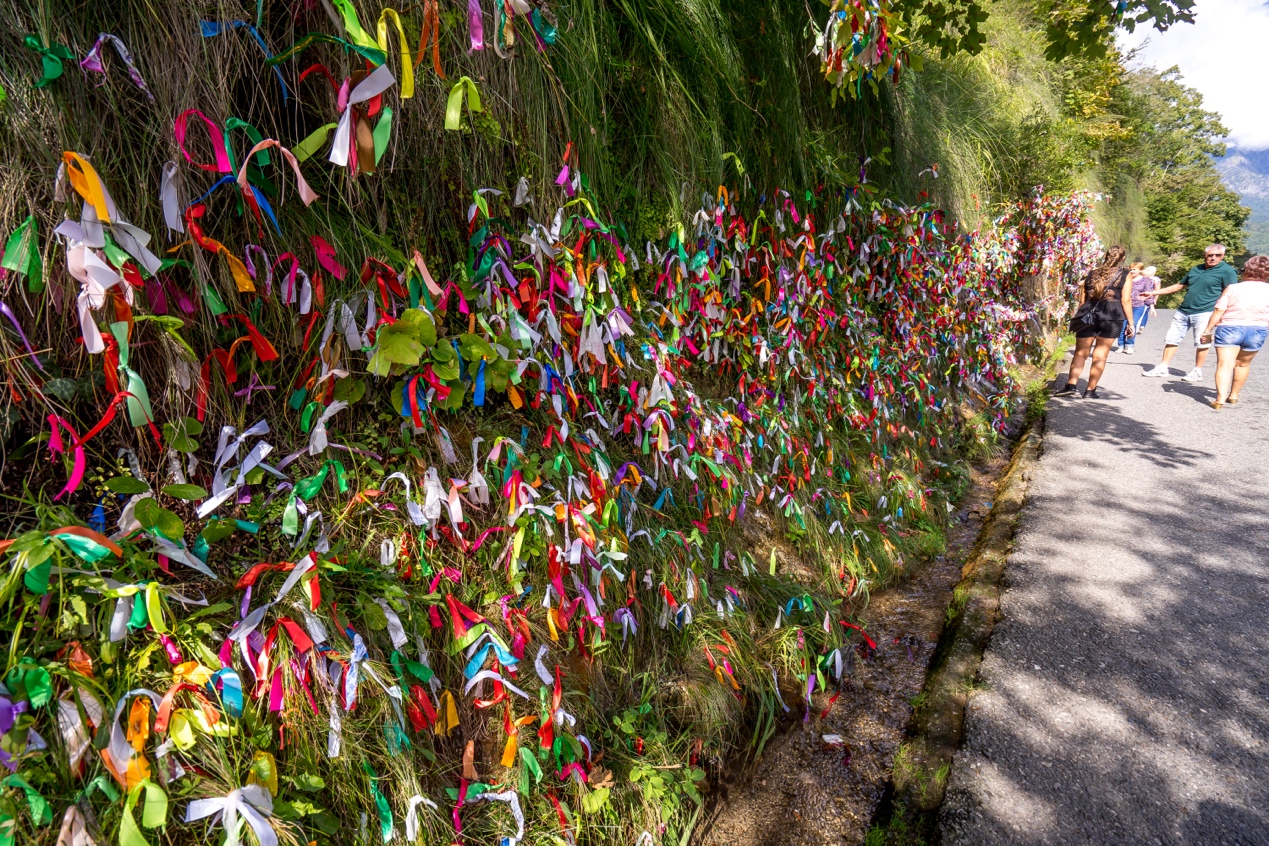
The passengers burst into laughter. However, it seems to me that God’s greatest favor (if any) to the Abkhazians must have been to assign them to a place close to Russia. Today, Russia not only sends troops to guarantee Abkhazia’s “independence”, but even generously covers 70% of the local financial expenses. Russian tourists contribute more than 98% to Abkhazia’s tourism industry, which is almost the only industry in Abkhazia. Tiny Abkhazia is perennially ranked as the most visited foreign travel destination for Russians. A staggering statistic is that even in the epidemic-ridden year 2020, over 2.8 million Russian tourists visited the place.
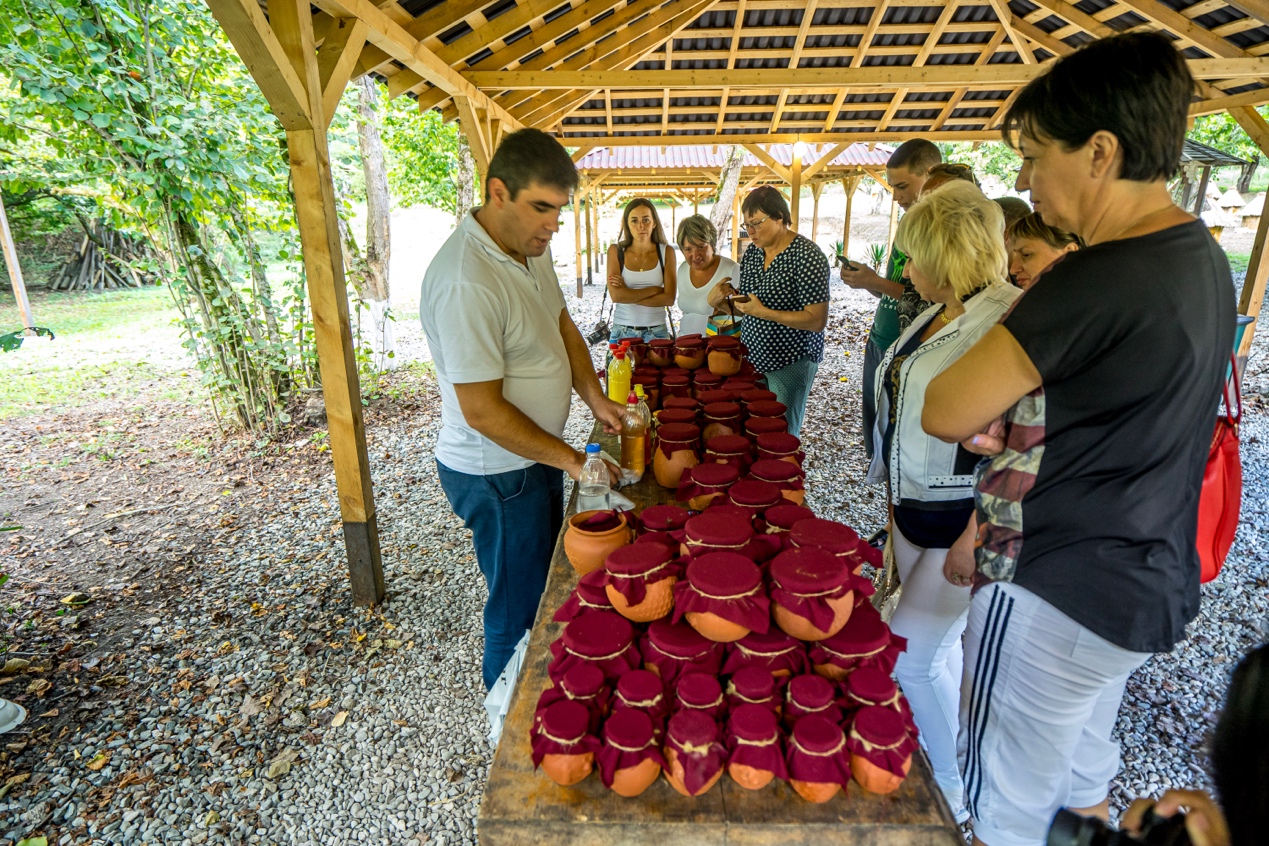
The coach stopped at a winery in the Caucasus mountains and the shopkeeper had set up a table of wine and cheese to greet us. There was no forced consumption as one might expect, only the shopkeeper’s attentiveness to keep refilling the free tasting glasses that tourists drink out of. I saw Alyosha refill his wine at least three times, wiping his mouth with satisfaction after a single drink and returning to the coach empty-handed. Not many tourists were paying for the wine, and most were middle-aged and older people in the group.

Then there was another honey workshop, with small house-shaped hives neatly lined up in the lawn in an artistic way. You can even open the small wooden door and observe the bees through the glass. Here, however, the exact same “hogging” scene was repeated again. I couldn’t help but ask the guide quietly, “You charge so cheaply, and there’s not much shopping going on, do you really make money?
“There’s too much competition.” He shrugged, “There are 200 travel agencies in Abkhazia, and when the fees get expensive, they go to someone else.”
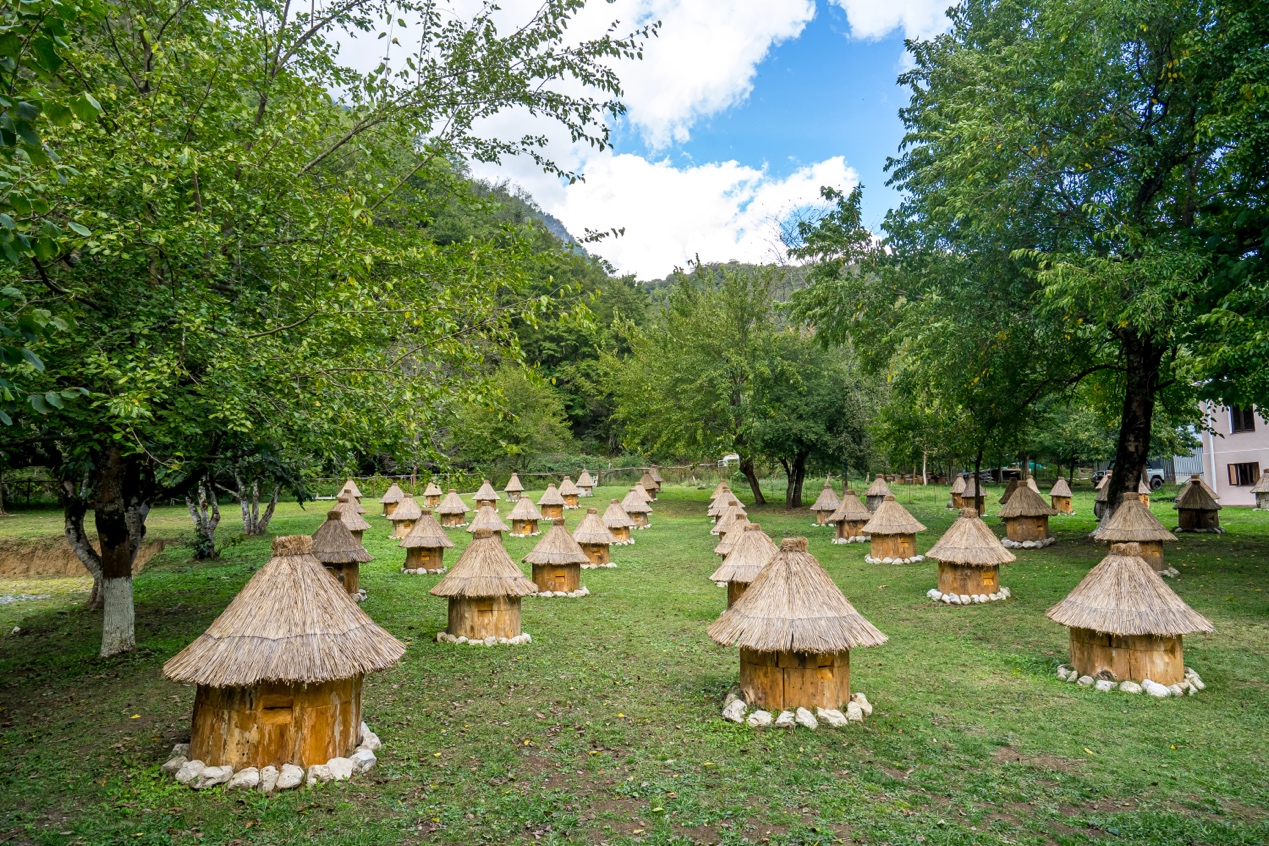
The main attraction of the day, and the purpose of the trip for most tourists, is Lake Ritsa, deep in the Caucasus Mountains, just 2 km from the Russian border.

Like many famous alpine lakes, Lake Ritsa, surrounded by mountains, has a hint of emerald luster. In early October in the southern foothills of the Caucasus Mountains, autumn has not yet officially begun and the mountains were still a lush green in sight. The postcards sold at the kiosk showed Lake Ritsa in late October, with its colorful autumn colors, rolling hills, and eddying waters.
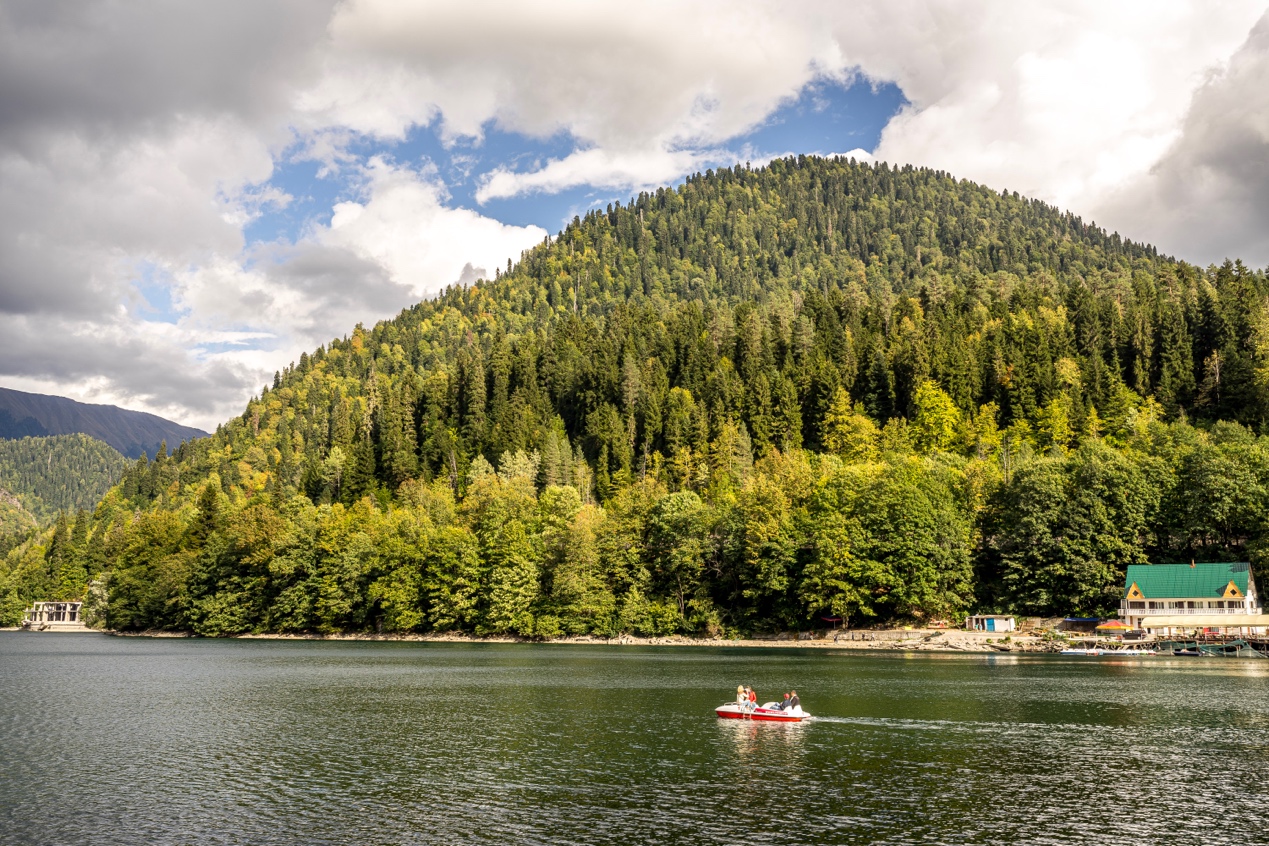
I don’t know if this enchanting lake and mountain is really “the place God chose to keep for himself”, as the guide said, but it is indeed the place Stalin chose to keep for himself – one of the four villas where he spent the last years of his life is located on the shores of this mountain lake. Why did the leader of the largest country in the world choose this as his final home?

I’m pretty sure, though, that not everyone who comes to Moscow falls in love with it. On the way back, I asked Alyosha if Lake Ritsa was fun. “As boring as a resort hotel.” He shook his head with a look of resentment.
Exploring the “bestiality laboratory”
In the dense undergrowth, a rusty iron sign read in Russian and English “Research Institute of Experimental Pathology and Therapy, Academy of Sciences of Abkhazian”, and in the middle of the sign was the head of a strange animal that looked like both a lion and an orangutan. It was located on a hillside on the outskirts of Abkhazia, only a few hundred meters from the Council of Ministers building in the city center, but the atmosphere was completely different. I looked at the map and confirmed once again: this was the place I was looking for.
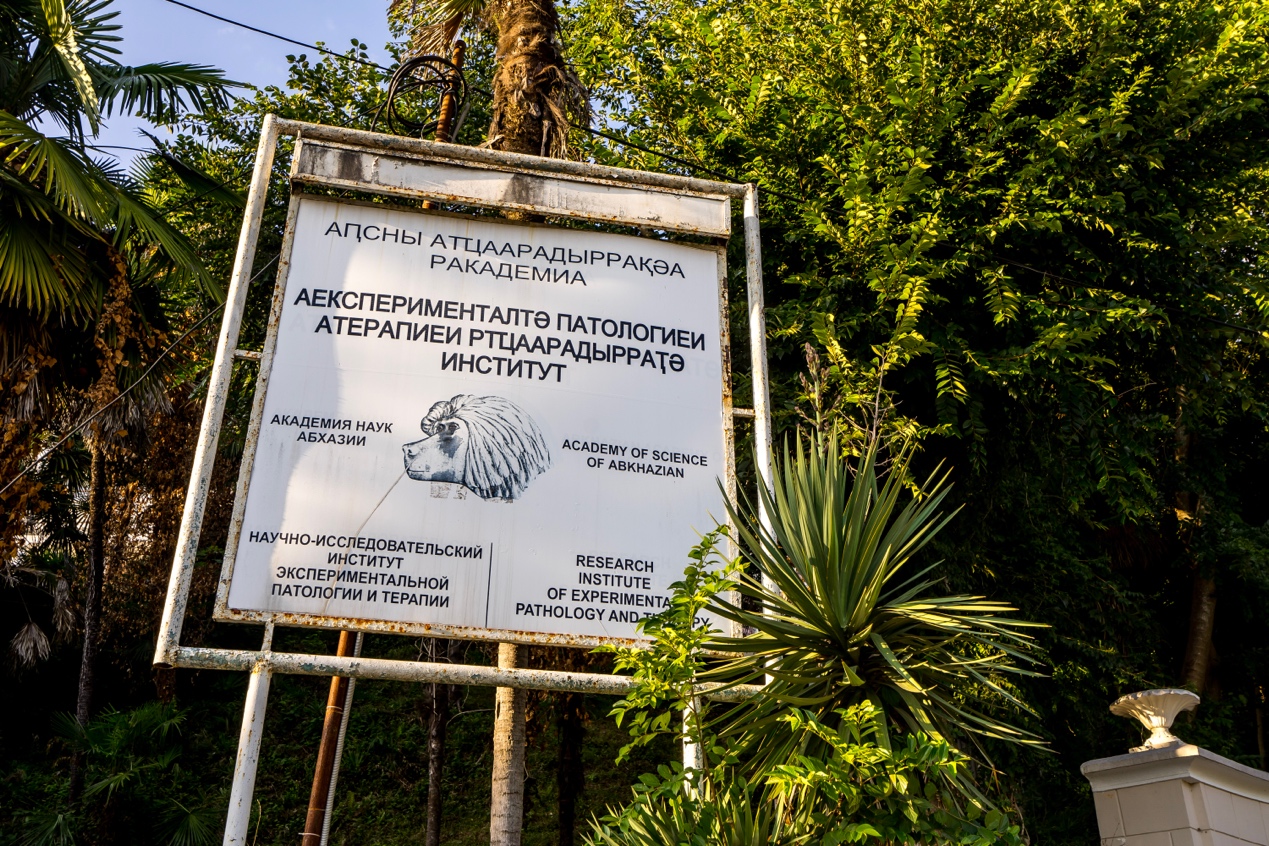
Of all the urban legends of Abkhazia, none is more astonishing or intriguing than that of the “bestiality laboratory”, where in 1910, Russian zoologist Ilya Ivanov presented a bold idea at the World Congress of Zoologists: to try to cross humans with other primates using artificial insemination. Ivanov, one of the world’s most influential zoologists of his day, had artificially inseminated 500 mares with semen from the same stallion, greatly improving reproductive efficiency. Later, his interest turned to heterozygosity and he successfully crossed cattle-antelope, zebra-monkey and zebra-horse. This succession of successes led him to envision the possibility of human-animal hybridization.
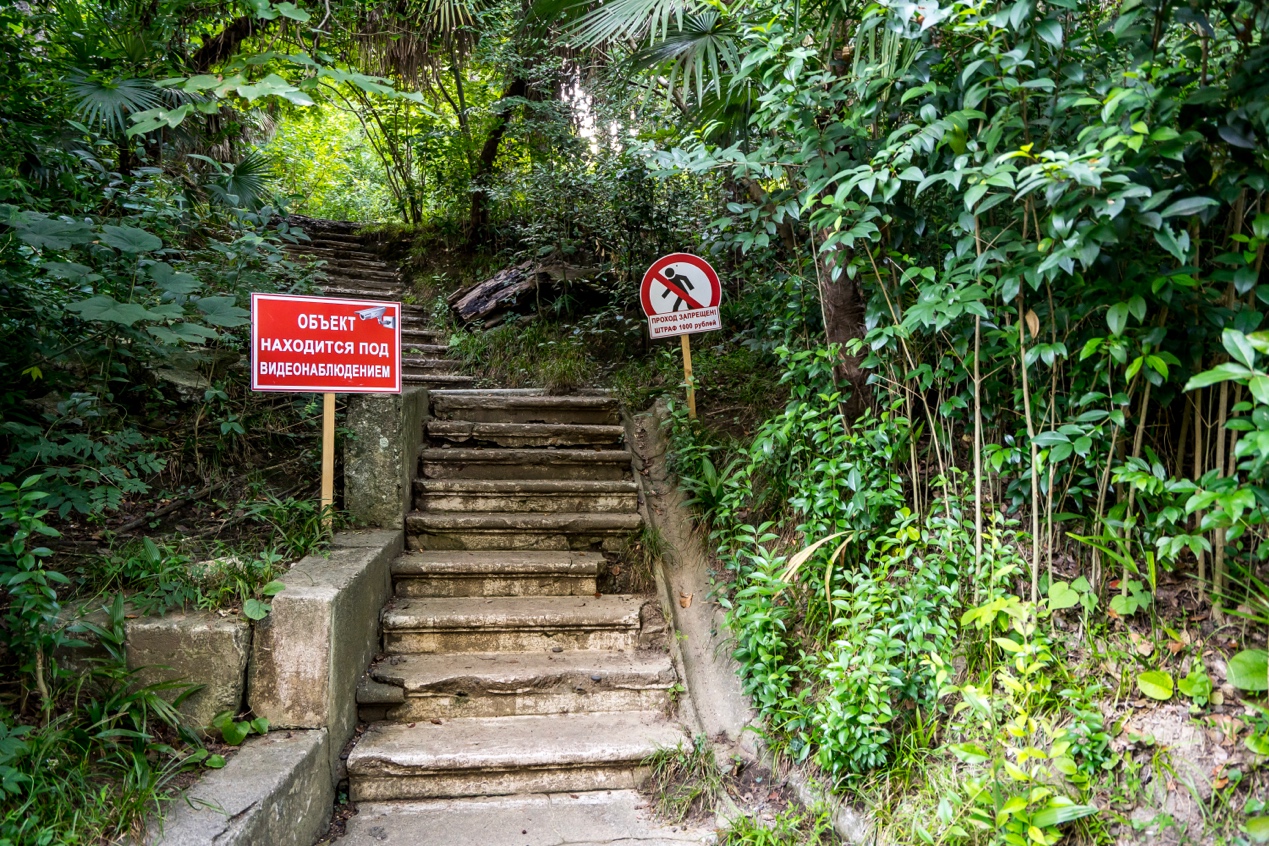
Zebras and horses actually differ by as many as 18 chromosomes, despite their similar appearance. In contrast, humans and chimpanzees differ by only two chromosomes, which makes interbreeding between the two species seem less difficult. However, due to financial and ethical concerns, Ivanov never had the opportunity to test his idea until the October Revolution, when the former Tsarist Empire was replaced by the Soviet Union. For the Bolsheviks of that era, “any scientific experiment that would help to improve the quality of the nation and the combat effectiveness of the army” was worth trying, and giving humans the hybrid advantage that had been widely proven in plants and animals was certainly one of them. So despite persistent and fierce opposition from the scientific community, Ivanov was able to secure financial support and in 1924 travelled to the hominid colony of Guinea (French West Africa in those days) to put his idea into practice.
However, the relatively simple experiment of “impregnating a chimpanzee with human sperm” ultimately failed, leaving Ivanov to try another possibility: impregnating a human with chimpanzee sperm. Obviously, the French authorities would not allow such a radical experiment, so he had to move his experimental site back to the Soviet Union. He brought 20 chimpanzees home from Africa and eventually managed to bring four of them to Abkhazia, the warmest and relatively most chimpanzee-friendly part of the Soviet Union, where he top-secretly began a new round of experiments that could change the world. It is said that five Soviet women even volunteered to participate “under the spell of science”. And the site of his experiments was the very institute I am in.
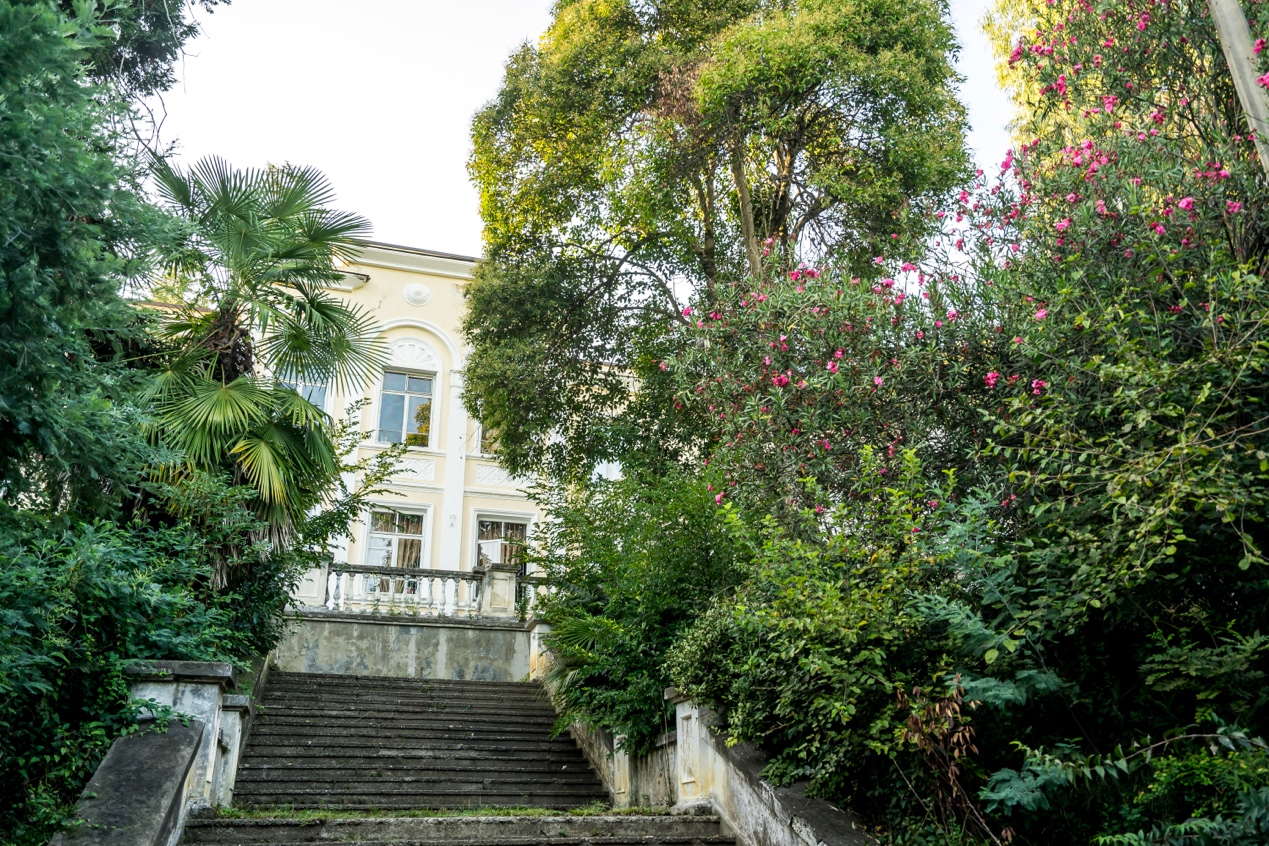
Broken steps led up to a small, typical Soviet-style two-story building, its yellowish exterior apparently freshly painted, but still unable to conceal the crumbling dampness emanating from within. The map showed that this must be the main building of the Institute. The doors were closed, so I couldn’t tell if it was still in use or not, but I could only hear the distant sounds of noisy animals barking. I went around to the side and found that the sound was actually coming from a giant animal cage connected to the main building and three stories high.
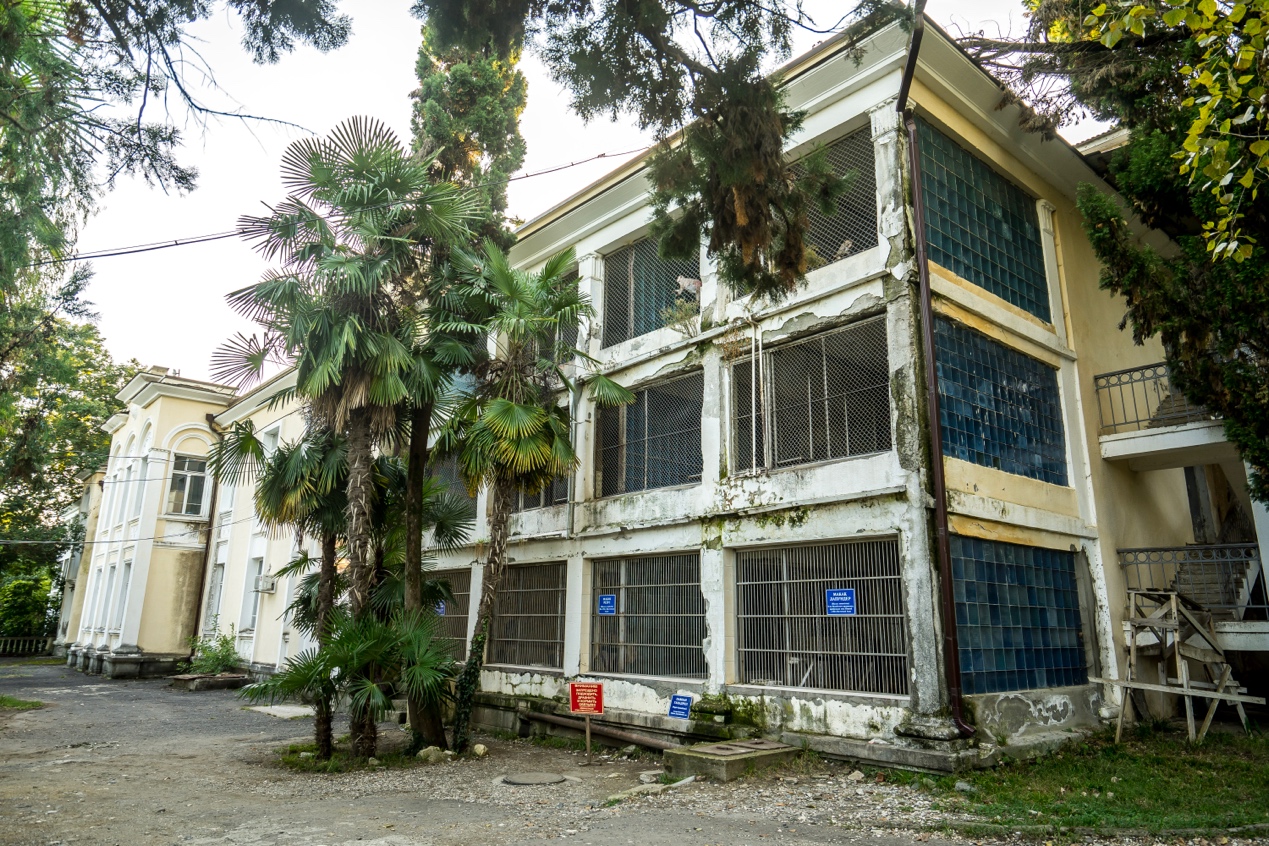
Compared to the main body of the renovated building, the cages remain in a pristine state of disrepair, with monkeys climbing high and low on the rusted bars, staring miserably out into the free world and even reaching out to me for food. It was far from tidy by zoo standards, let alone a place for serious scientific experimentation: the tiles were long gone from the cages, the damp walls were covered in disgusting moss, and what was even more unbearable was the overwhelming stench, as you often get in zoos, but at least ten times stronger. I held my nose close to the cage and identified the species, but was disappointed to find that most of them were the usual rhesus monkeys and baboons used in biological experiments, not even a single chimpanzee “that could be used for human-animal hybridization”.
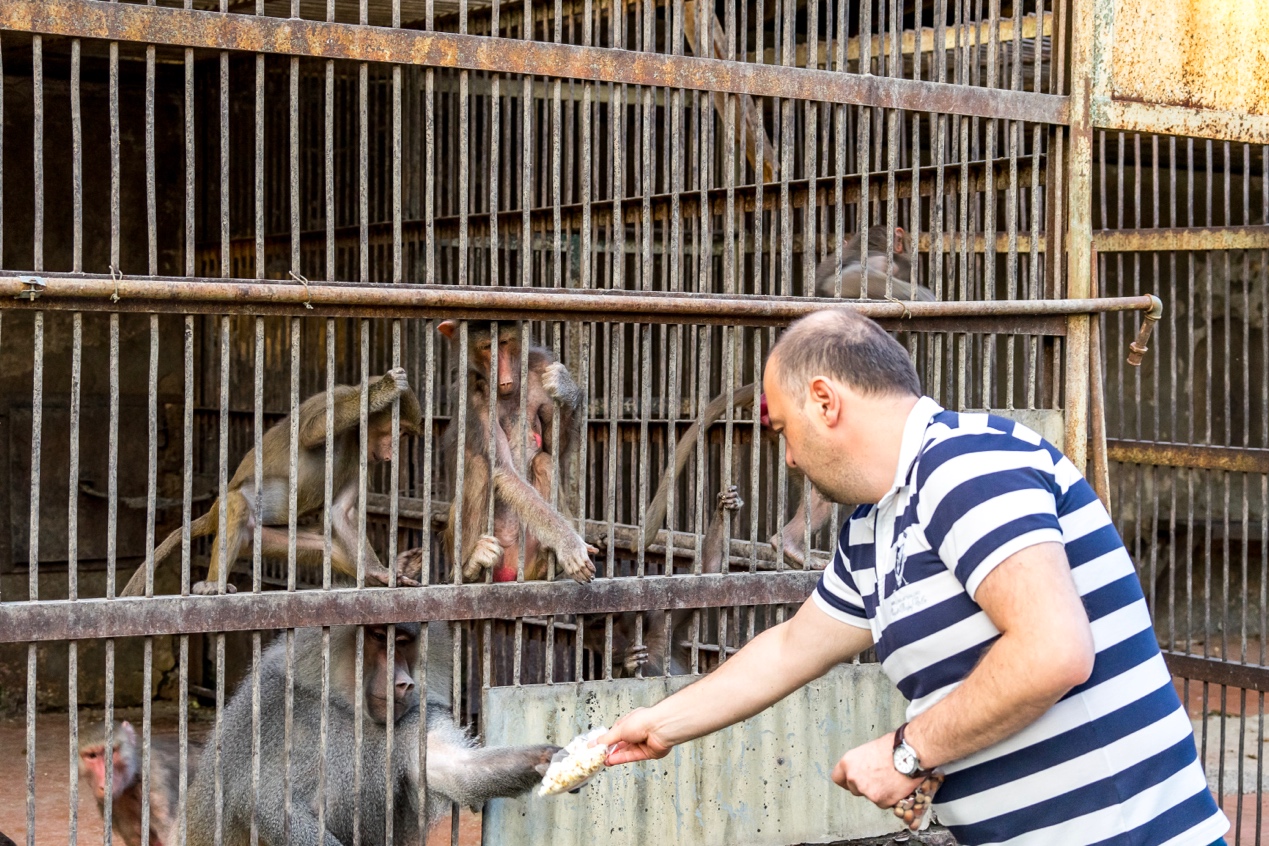
The side door to the main building seemed to be only hidden, and I was about to quietly push it open to take a peek when I happened to bump into a middle-aged woman walking out. She was carrying a woman’s bag, apparently on her way home from work, her scantily clad clothes an odd contrast to the shabbiness of her surroundings. I pointed to the dark hallway, meaning: can I visit? “Ticket.” she said icily.
But when I handed her 250 rubles for the entrance fee, she turned around and locked the gate. No matter how much I gestured, “Why don’t you let me in?”, she just repeated “No” impatiently and got into the brand new SUV parked next to me and drove off with a bang. I looked down at the ticket she had just sold me and realized I had been tricked: it was just a ticket to visit the outdoor monkey house, the building was never open to the public. These poor monkeys, not to mention the poor conditions they live in, were actually being used as a profit-making tool!
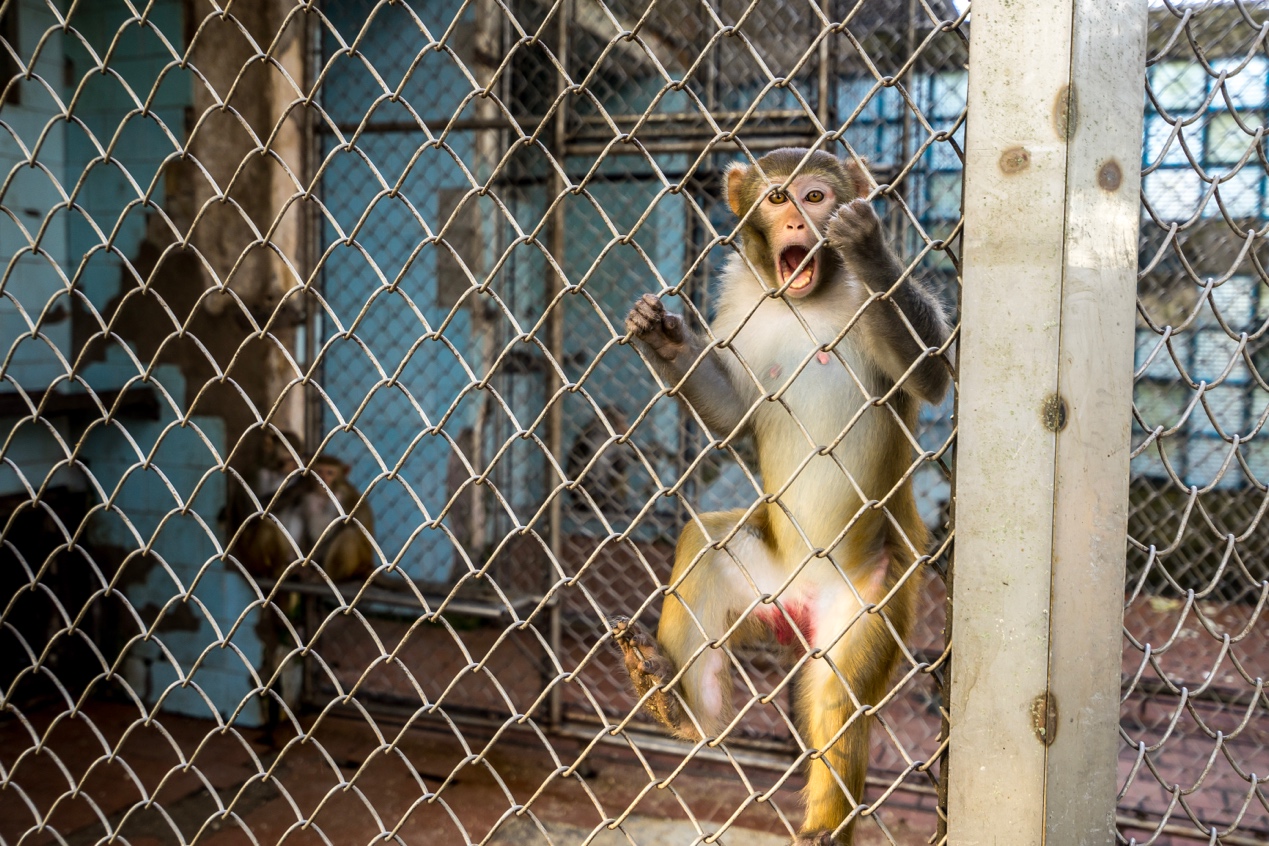
There wasn’t much to see in the monkey house, so I had to continue to remember what I had read about the history of “human-animal” experiments, hoping that I could find some evidence of this. According to the declassified Soviet archives, Ivanov’s experience after arriving in Abkhazia could only be described as tragic: only one of the four chimpanzees he brought back after all the trouble he went through was able to reach sexual maturity, probably because of the unsuitability of the soil. Just as he was about to collect his semen and inject it into a female volunteer, the gorilla, on whom he had placed all his hopes, suddenly died of a cerebral haemorrhage.
Three years later, in 1930, a new batch of chimpanzees finally arrived. But just as Ivanov was ready to continue his experiments, he fell victim to the Soviet Great Purge that year for his radical academic views and was exiled to Kazakhstan. He never had the opportunity to continue his experiments until his death two years later. After Ivanov’s death, his bestiality laboratory did not close, but continued to operate under the name “Research Institute of Experimental Pathology and Therapy”. In front of the main entrance of the Institute, the history was inscribed on the base of a huge rusty statue of a baboon: “Through primate experiments, we eradicated polio, yellow fever, typhus, encephalitis, smallpox, hepatitis and many other human diseases.”
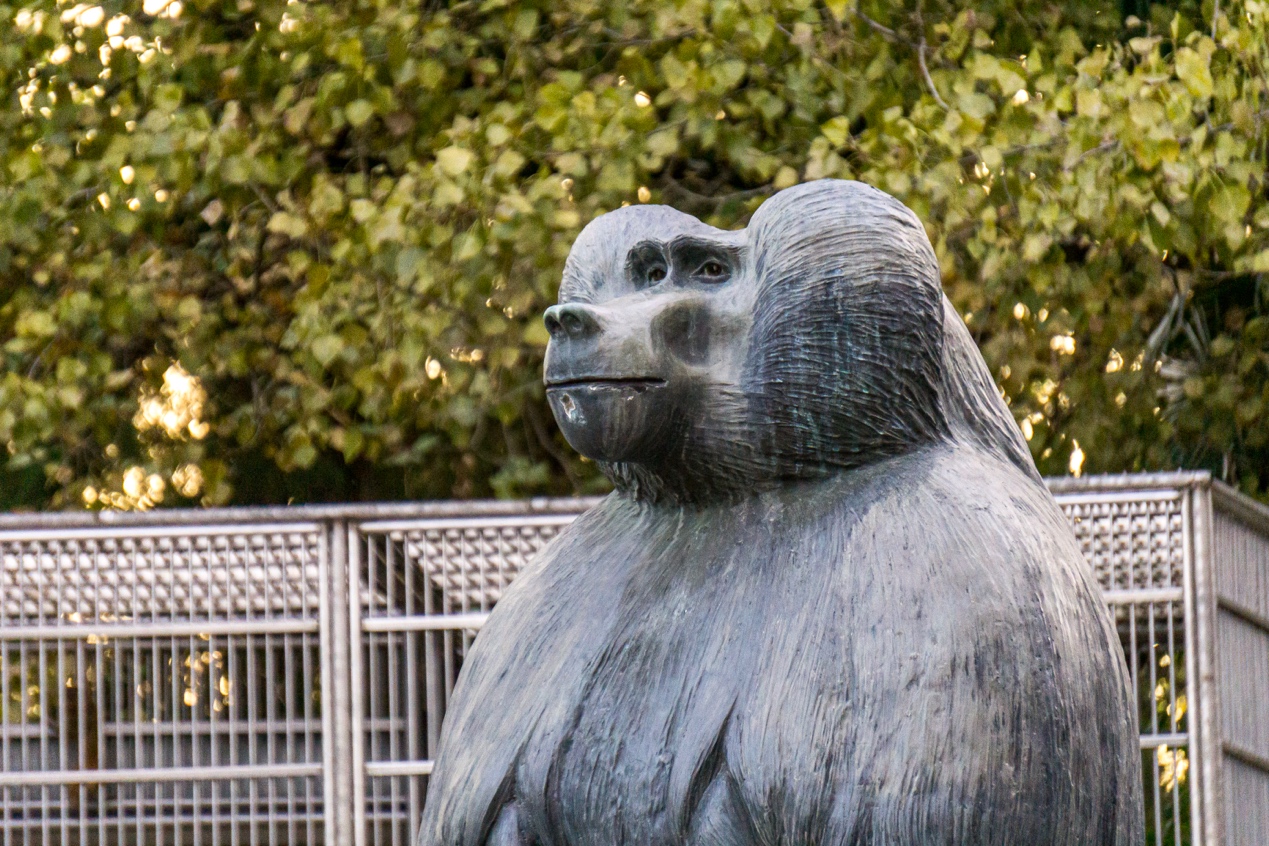
In addition to the main building and the monkey house, there were several other buildings, large and small, scattered around the perimeter, but they all looked nearly abandoned, and some even had bullet holes from the war. I tried to climb up to the only open window by stepping on the waistline of the main building’s façade and stuck my camera through a gap in the bars. I was amazed by the pictures I took: the whole room looked like a long-forgotten junkyard. Test tubes, reagent bottles, and lab equipment were piled haphazardly on the dusty old wooden floor, even interspersed with packing cartons that were clearly Soviet in style. Looking closer, the corridor outside the door was also in such a messy state. How could a place like this be the workplace of the woman who just wore a designer label and drove a luxury car?
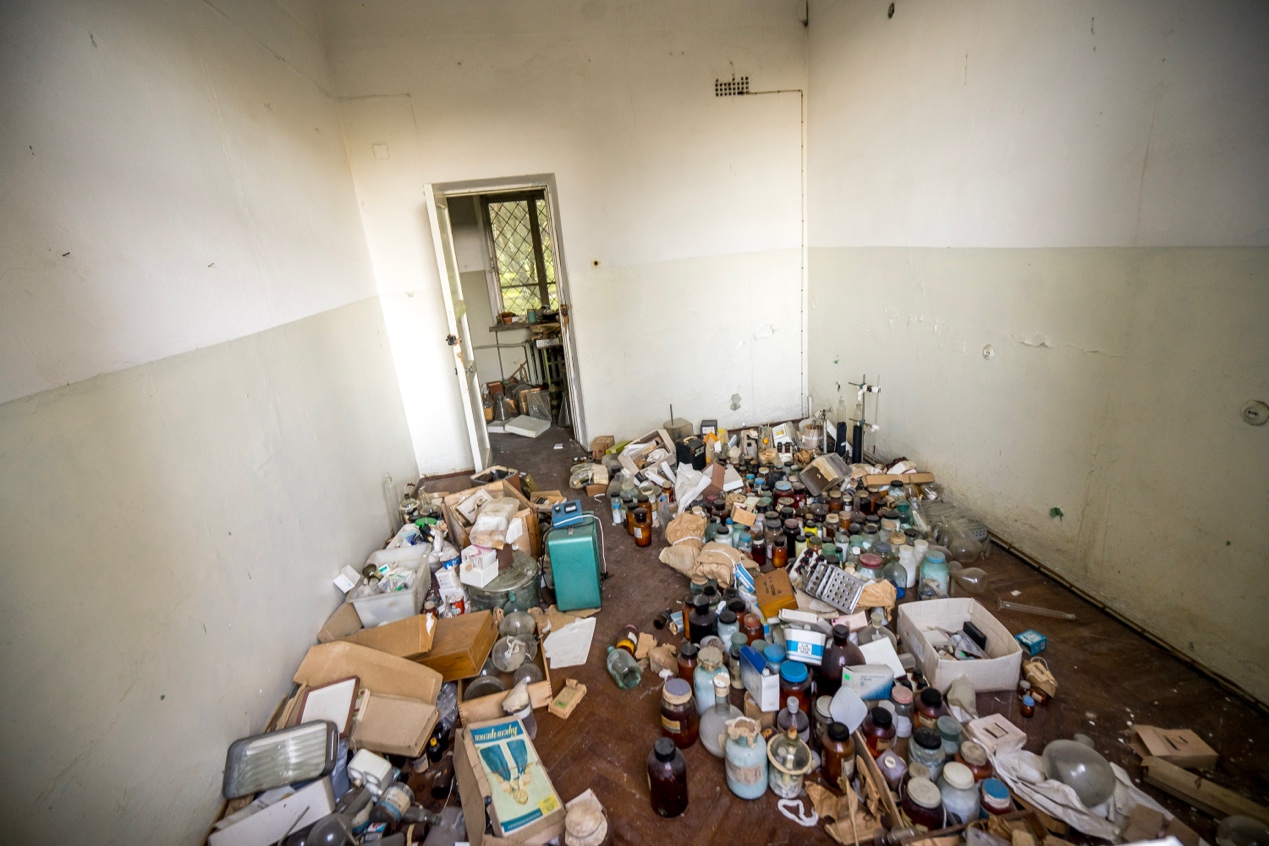
On the way down, I repeatedly double-checked that interior photo I’d just taken, and to my surprise, I really did find a huge suspicion: two old-fashioned electrical sockets spread out in parallel, about a meter or so apart, waist-high on the wall. Yes, that’s like the setup of an old double ward! The two sockets would have been located at the head of each of what were once two hospital beds, with the distance between them being just the width of a hospital bed and a bedside table!
According to the markings above the back door of the main building, the building was built in 1966, long after the Institute had been converted to purely animal experiments, so why was there a ward for human use in the building? Some people on the Internet claim that the Soviet Union continued to experiment with human-animal interbreeding here during the Cold War in order to create a secret weapon that could defeat the United States. However, the truth behind these rumors is probably forever lost in the tide of history.
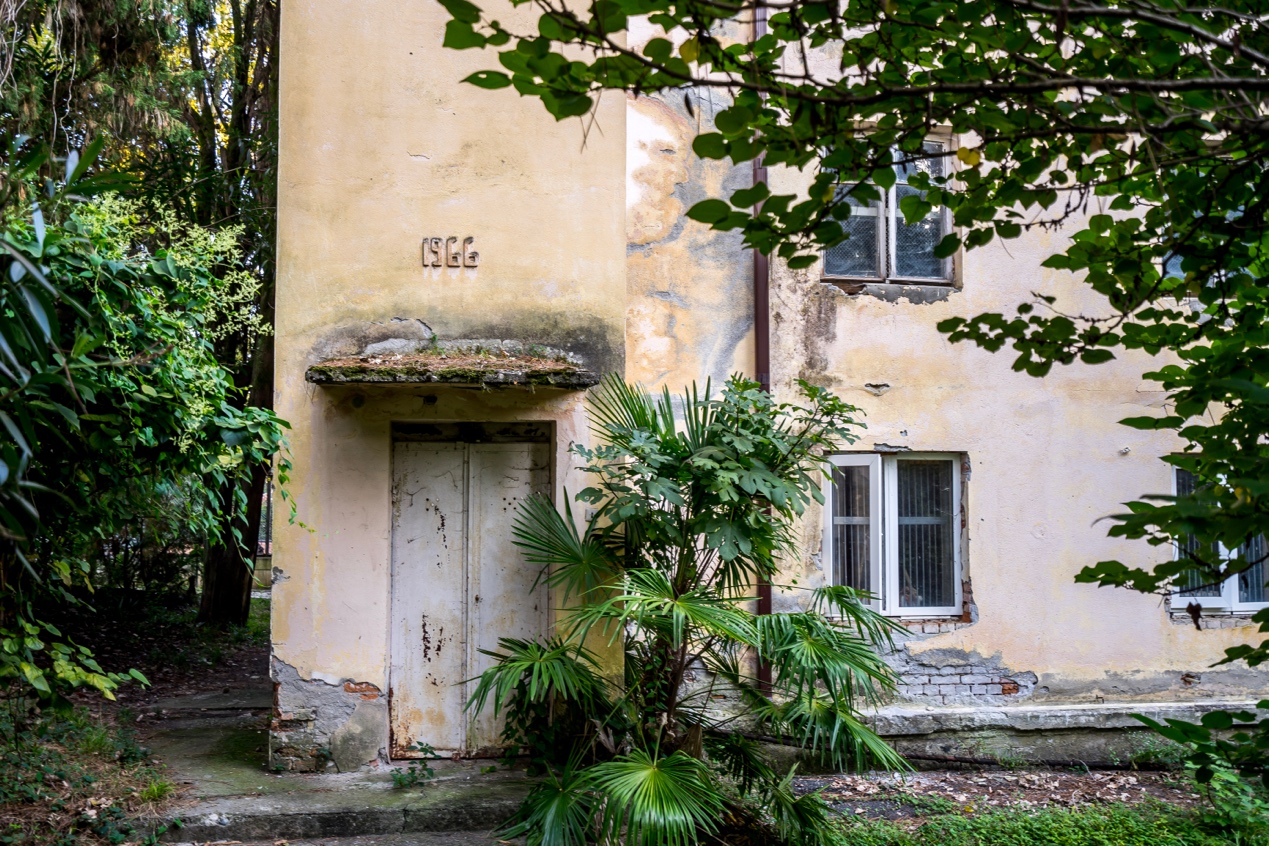
The epilogue
On last drink with Rauf, I asked this Abkhaz with a Russian passport what he thought of Russia, a country that has fully penetrated the lives of Abkhazians.
“Of course, we need them, all the time, no doubt.” He paused and took a sip of Russian Standard vodka. “But if Russia wants to turn us into another Crimea, I’m sure the Abkhazians will show them another Chechnya.”
Chechnya, the neighbour on the other side of the Caucasus, despite having a very different religion from the Abkhazians, does not seem to have prevented their history of resistance from becoming an example for the Abkhazians. One is reminded of the complaint of the Tsarist general Grigory Philipson, who led his army to occupy Abkhazia in 1852: “We have occupied Abkhazia, but we have not been able to really rule it.” How similar this situation is to Abkhazia today.
The next morning, John insisted on driving us to the station, and the whole family came out to see us off. After hugging and saying goodbye, John asked if we could translate the “Chinese” in his car. Why was there Chinese in his car? After a quick glance, it dawned on me: it was just Japanese. He was driving a used Japanese right-hand drive car, the low price of which made it popular in the former Soviet Union.
Abkhazians living on the edge of Eurasia will no doubt have only a vague idea of both distant East Asia and the culture behind it. But how could Abkhazia, Georgia, the Caucasus…all these distant place names, be anything but to us Chinese?
Sitting in the bus, I saw the streets of Sukhumi pass by for the last time. The huge frescoes from the Soviet era still stood out, but next door, on the house, there was a huge picture of Vladislav Ardzinba, the first “president” of Abkhazia, known as the “father of the Abkhazian state”. A large picture of Vladislav Ardzinba, the first “president” of Abkhazia and known as the “father of the Abkhazian state”, with the words “Long live Abkhazia” on the side.

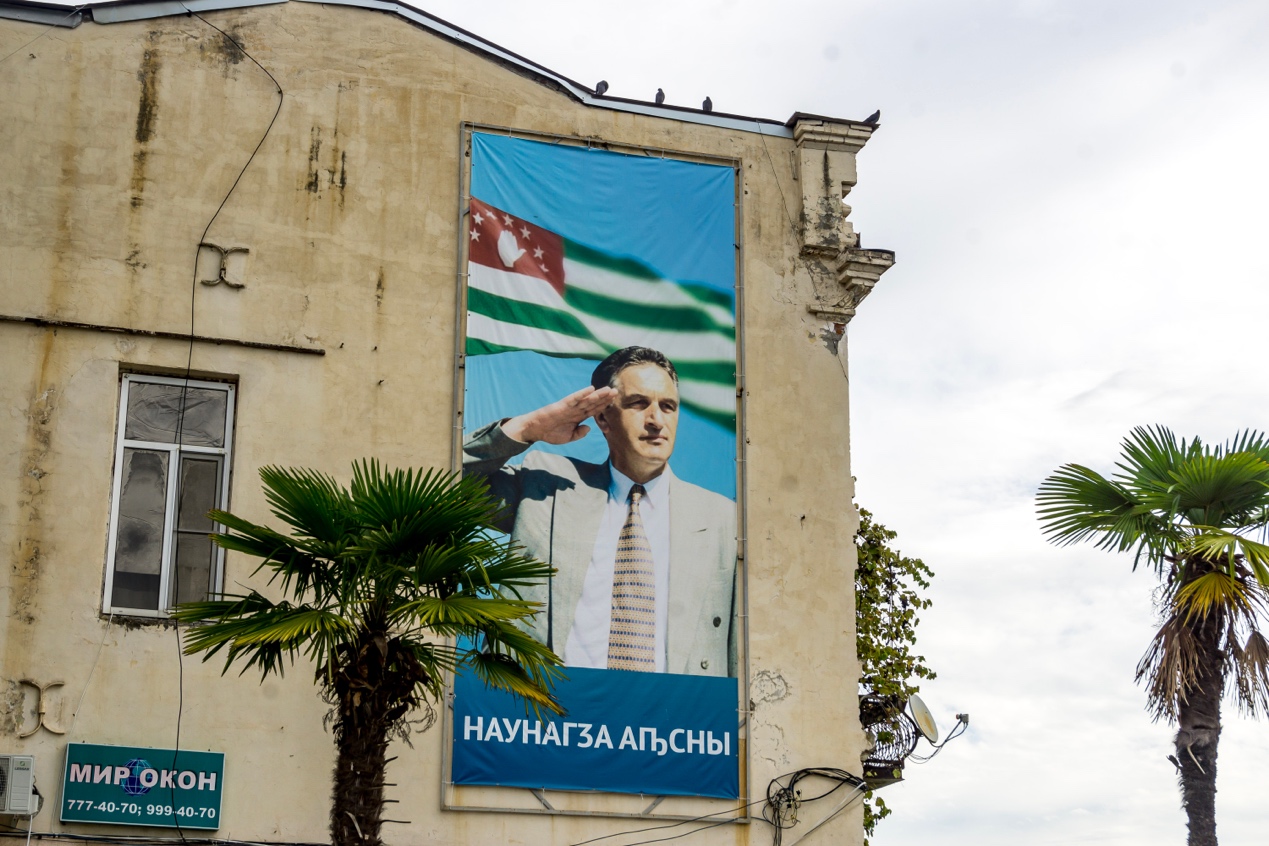
This time, we finally caught the bus that goes directly to the border. The bus was piled high with bags of transit passengers, most of which were goods to be taken to the other side of the border for sale. Even though Abkhazia has long since sunk into the abyss of division, the inhabitants on both sides of the Inguri River continue their daily exchanges as they have for thousands of years.
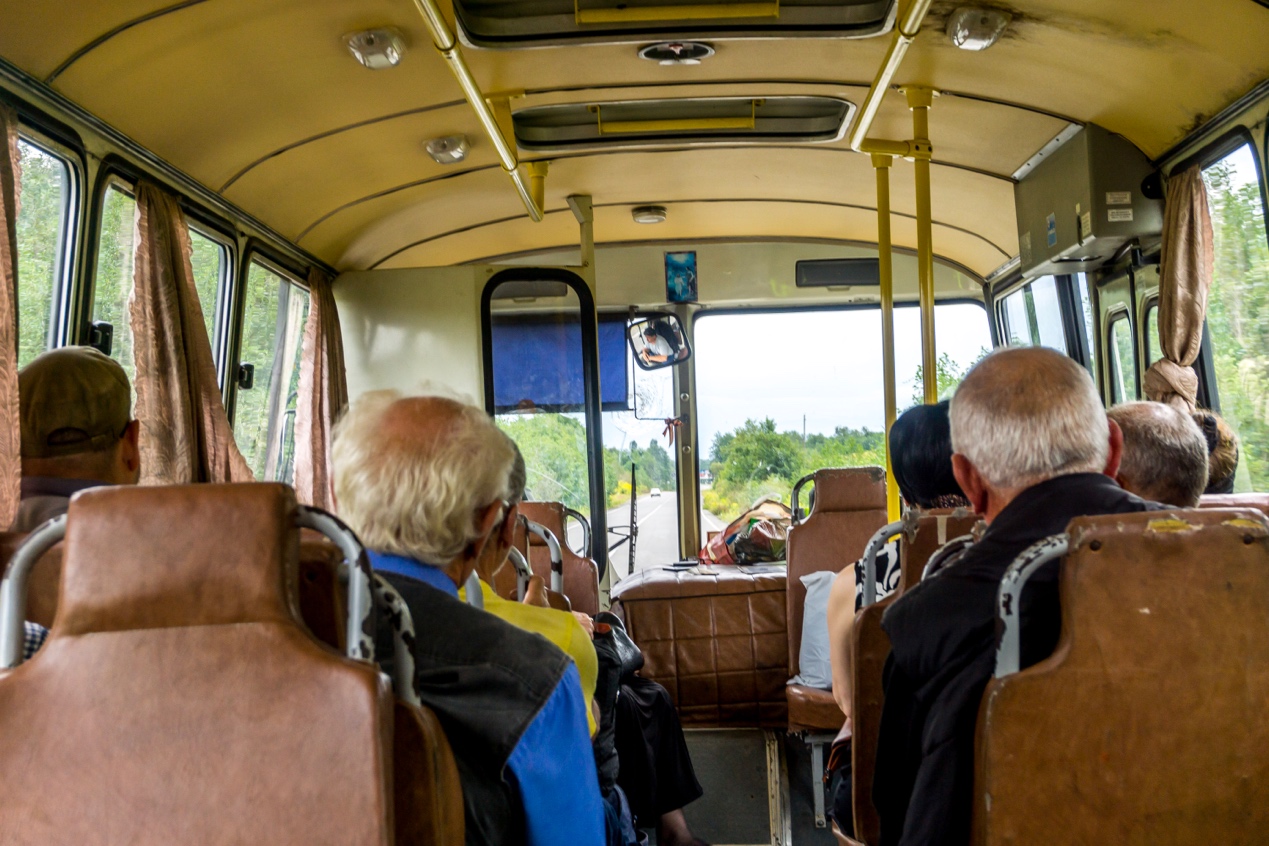

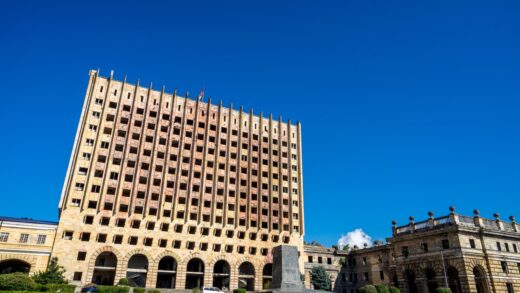

2 Responses
[…] For the other two parts, see “Abkhazia, a ‘nonexistent’ country (1)” and “(2)“. […]
[…] the other two parts, see “Abkhazia, a ‘nonexistent’ country (2)” and “Abkhazia, celebrating National Day in a ‘nonexistent’ […]